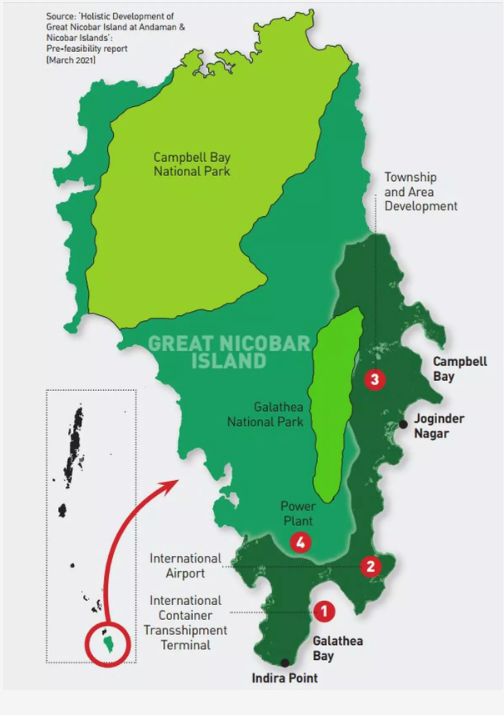14 August 2024 : Indian Express Editorial Analysis
1. A caveat in the jobs data
(Source: Indian Express; Section: The Ideas Page; Page: 15)
| Topic: GS3– Indian Economy – Issues relating to development and employment. |
| Context: |
| The article critically examines the use of the KLEMS database in supporting claims of job creation in India. |
Overview of the KLEMS Database and Its Relevance
- The KLEMS database has garnered attention as it is increasingly referenced in debates surrounding job creation in the country.
- Developed through an international project and supported by esteemed institutions like the Delhi School of Economics and ICRIER since 2009, this database has been housed at the Reserve Bank of India (RBI) since 2022.
- The KLEMS database compiles data on key economic factors—capital (K), labor (L), energy (E), materials (M), and services (S)—from 1980 to 2024.
- It aims to provide a tool for measuring and monitoring productivity growth at both industry and aggregate economy levels.
- However, the increasing reliance on KLEMS data to support claims of job creation necessitates a thorough examination of its methodology, sectoral details, and original sources.
Methodology and Data Sources in KLEMS
- The KLEMS database employs data from various national surveys, including the Employment-Unemployment Surveys (EUS), Periodic Labour Force Surveys (PLFS), National Account Statistics, and the Annual Survey of Industries.
- Due to the absence of annual data from the National Statistical Office, the available data are used as benchmarks, with interpolations filling in the gaps for other years.
- The methodology involves using EUS and PLFS data to determine the sectoral distribution of workers based on the Usual Principal and Subsidiary Status (UPSS) for four demographic groups: rural male, rural female, urban male, and urban female.
- Since these surveys do not provide absolute worker numbers, worker-population ratios (WPR) derived from the surveys are multiplied by the total population.
- Population data are either interpolated using Census numbers or sourced from projections by the National Population Commission under the Ministry of Health and Family Welfare (MoHFW).
Issues with Population Projections and Workforce Estimates
- A key aspect of the methodology is the use of MoHFW’s population projections from 2020-21 onward.
- However, these projections are available only for males and females, with uniform growth rates applied to project rural and urban populations.
- This approach introduces potential inaccuracies, as the rural population is assumed to grow at the same rate as the urban population, despite evidence that rural areas typically experience slower growth.
- The WPR for rural areas, which is higher than in urban areas, combined with potentially inflated population figures, could result in an overestimation of employment numbers, especially in the 2020s.
Impact of Methodological Assumptions on Employment Data
- The KLEMS database reflects significant employment increases in agriculture, services, and manufacturing from 2018-19 to 2022-23.
- This rise is partially attributed to the population increase and the methodology of projecting employment even if the WPR remains unchanged.
- Moreover, the inclusion of workers with subsidiary employment, many of whom are unpaid family workers, inflates the employment figures.
- This approach, relying on projected population data and WPR from EUS/PLFS, could be misleading, as it does not account for the nature and quality of work, thereby raising concerns about the accuracy of the job creation claims.
Comparison with Other Employment Data Sources
- A comparison by economists at the State Bank of India (SBI) between the KLEMS database and the Annual Survey of Unincorporated Sector Enterprises (ASUSE) highlights discrepancies in employment data.
- The ASUSE survey, which excludes certain sectors, estimates employment at only 10.96 crore, yet this is inflated to claim total employment of 56.8 crore in 2022-23, close to the KLEMS data.
- This raises questions about the validity of using enterprise-based surveys to estimate employment, as they are not easily comparable to household employment surveys, which are generally considered more reliable.
- Additionally, the registration of MSME units on the Udyam portal or changes in EPFO subscriptions does not necessarily indicate new job creation or additional employment generation.
Conclusion: Questioning Employment Growth Claims
- Given the methodological limitations and potential overestimations within the KLEMS database, it is surprising that claims of rapid employment growth, particularly in decent jobs, are being made based on this data.
- The discrepancies between different data sources, the inflation of workforce numbers due to population projection methods, and the inclusion of tenuous employment connections all suggest that caution should be exercised when interpreting KLEMS data for policy-making and economic analysis.
| PYQ: Most of the unemployment in India is structural in nature. Examine the methodology adopted to compute unemployment in the country and suggest improvements. (250 words/15m) (UPSC CSE (M) GS-3 2023) |
| Practice Question: Critically analyze the methodology and data sources used in the KLEMS database for estimating employment in India. Discuss the potential implications of these methodological approaches on the accuracy of employment figures and the broader claims of job creation in the country. (250 words/15 m) |
2. A port of no return
(Source: Indian Express; Section: The Ideas Page; Page: 15)
| Topic: GS3– Environment – Conservation |
| Context: |
| The article discusses the manipulation of environmental regulations to allow a large-scale port project in the ecologically sensitive Galathea Bay of Great Nicobar Island. |
What are the Key Facts About the ICTP (International Container Transshipment Port) Project?
- The ICTP is a major infrastructure project that aims to facilitate the transshipment of containers between different ports.
- A transshipment deepwater seaport facilitates the handling of large cargo vessels, featuring a deep water channel and expansive berth areas for efficient loading, unloading, and the seamless transfer of goods between ships at the port.
- The proposed ICTP at Galathea Bay, Great Nicobar Island, is strategically positioned just 40 nautical miles from the International shipping trade route.
- The ICTP aims to become a leading container transshipment port by leveraging its strategic location, natural water depth, and capacity for the transshipment of cargo from nearby ports.
Significance:
- In India, nearly 75% of transshipped cargo is handled at ports outside the country.
- Colombo, Singapore and Klang handle more than 85% of this cargo with 45% of it handled at Colombo Port alone.
- India is banking on the strategic location of Galathea Bay for export-import trade as it lies on international shipping routes.
Benefits:
- The project is expected to generate forex savings, attract foreign direct investment, and boost economic activity at other Indian ports.
- It will also contribute to enhanced logistics infrastructure, employment generation, and increased revenue share.
- The development of this Mega Container Terminal is a part of the holistic development of Great Nicobar Island.
The Great Nicobar Island Controversy: Denotification of CRZ-IA Zones
- The article draws a parallel between the hypothetical urban scenario and a real-life situation in the Great Nicobar Island, where a Rs 42,000 crore transshipment port is proposed in Galathea Bay.
- The area, originally classified as a Coastal Regulation Zone (CRZ)-IA due to its rich biodiversity, including nesting sites for the giant leatherback sea turtle, coral colonies, and mangroves, was protected from large construction projects.
- However, in a move reminiscent of the urban land misappropriation, the Galathea Bay Wildlife Sanctuary was denotified in January 2021, allowing the project to proceed despite the continued ecological importance of the site.
Flawed Environmental Clearances and Legal Oversight
- The article criticizes the Ministry of Environment, Forests and Climate Change (MoEFCC) and its Environmental Appraisal Committee (EAC) for clearing the project, despite the ecological significance of the area and its original CRZ-IA classification.
- The National Green Tribunal (NGT), although acknowledging the presence of coral colonies and the CRZ-IA status, failed to prevent the project from advancing.
- A high-powered committee (HPC) was appointed to investigate, but its composition raised concerns about potential conflicts of interest, as key members were from the very agencies that had approved the project.
Manipulation of Scientific Reports: Redefining CRZ-IA
- To resolve the issue of the project being in a CRZ-IA zone, a “ground-truthing” survey was conducted by the National Centre for Sustainable Coastal Management (NCSCM).
- The survey’s results, as cited in ANIIDCO’s affidavit to the NGT, conveniently reclassified the area as CRZ-IB, where port construction is permissible, thus retroactively justifying the environmental clearance.
- This reclassification, despite the continued presence of endangered species and sensitive ecosystems, highlights the manipulation of scientific reports to align with development interests.
Conclusion: Legal and Environmental Implications
- The article concludes by highlighting the absurdity of the situation, where legal and environmental protections are undermined through bureaucratic and legal maneuvering.
- The reclassification of the CRZ-IA zone in Great Nicobar Island, despite overwhelming evidence of its ecological importance, represents a broader pattern of subterfuge in environmental governance.
- The analogy with the urban land scenario underscores the dangers of prioritizing development over environmental conservation and the rule of law.
| Key Facts About Great Nicobar |
|
|
PYQ: Which one of the following pairs of islands is separated from each other by the ‘Ten Degree Channel’? (2014) (a) Andaman and Nicobar Ans: (a) |
| Practice Question: Discuss the challenges in balancing infrastructure development with environmental conservation in India, with reference to the reclassification of ecologically sensitive zones. Critically examine the role of environmental impact assessments and the legal framework in ensuring sustainable development. (250 words/15 m) |

 It is the southernmost island of the Nicobar Islands Archipelago.
It is the southernmost island of the Nicobar Islands Archipelago.

